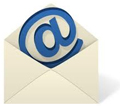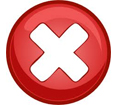Net Atlantic Quarterly - Fall 2011
Message from the CEO:
With the holidays fast approaching, it’s not too early to prepare your email messaging and web promotions for increased traffic.
In this fall issue our lead article gives you some great sample headlines guaranteed to increase opens and click-throughs and then convert people from your web site and landing pages. Intensify the headlines you use, mix it up a bit, and give some of them a try. We’ve also included articles on email and web analytics, email inbox delivery, and more.
If you have any feedback, concerns, or suggestions for us about our support, products or services, please contact us at www.netatlantic.com.
Best regards,
Andrew Lutts, CEO
Net Atlantic, Inc.
Table of Contents
- Do Your Subject Lines Demand Attention?
By Nicole McNamara - Analytics to Grow Your Business
By Nicole McNamara - Thirteen Ways to Improve Inbox Delivery
By Marianne Cellucci - Do Images Detract From Your Message?
By Marianne Cellucci - The Myths of Social Marketing
By Nicole McNamara
Do Your Subject Lines Demand Attention from Your Customer?
By Nicole McNamara, September 20, 2011
 With the holidays approaching fast, it’s the most important time to make sure your emails are attracting your customers. The first message you send to your customer is in the subject line. This brief phrase determines whether your customers open your email or mark it Spam. An unattractive subject line can be a quick one-way ticket to the Delete Folder, while an eye-catching subject line can draw your customer to read your message, click to shop or explore your company further.
With the holidays approaching fast, it’s the most important time to make sure your emails are attracting your customers. The first message you send to your customer is in the subject line. This brief phrase determines whether your customers open your email or mark it Spam. An unattractive subject line can be a quick one-way ticket to the Delete Folder, while an eye-catching subject line can draw your customer to read your message, click to shop or explore your company further.
Here are 10 Great Strategies and Subject Line Ideas to Communicate with Customers:
- Be Brief (Top 25 Under $25)
- Use Numbers (Ends at Midnight! Enjoy 25% Off)
- Make It Special (30% Off – Email Invitation Only [or Online Only])
- Debut New Products (Just Arrived [or Introducing…] – Order Now)
- Offer Sales (Save 15% on Your Next Order)
- Remind (Extended Until Friday! Save 25% Off [or Free Shipping])
- Be Helpful (Great Gift Ideas for (Mom, Dad, Brother…) )
- Personalize (Nancy, See Our Autumn Sale)
- Be Exciting (Hurry! Our New Sweaters Are Going Fast!)
- Be Creative (Trick or Treat - Click for Sweet Deals on Our Award-Winning Chocolates)
Here are 10 Great Strategies and Subject Line Ideas to Approach Businesses:
- Be Funny (10 Ways to Motivate Your Lazy Employees)
- Remind (Join Our “Marketing is Key” Webinar This Friday. Register Now!)
- Be Creative (How to Increase Your ROI Over Breakfast)
- Be Consistent (Monthly Alert: This Season’s Trends in Our Fall Newsletter)
- Ask Questions (Should Your Business Relocate?)
- Use Numbers (Marketing Tip: 5 Ways to More Effective Advertising)
- Guarantee (Increase Your Revenue By 40%, Guaranteed!)
- Offer Sales (Save 20% On Our New Software)
- Personalize (Here is a Gift We Think You’ll Love)
- Be Relevant (Inside: Taxes Increasing 8% This Month. Should You Be Worried?)
Analytics to Grow Your Business
By Nicole McNamara, September 9, 2011
 Email Analytics
Email Analytics
In order to track the effectiveness and the efficiency of your email campaigns, it’s important to make use of analytical tools available to you. With the information from these tools, you can create emails that catch the eye of your current customers and entice them to visit your website.
Good analytics will help you send timed, relevant emails to a targeted group of your customers based on demographics, preferences and behavior. You’ll be able to not only measure several metrics, including the number of targeted, sent, failed, opened, clicked, and unsubscribed emails, but you’ll also be able to relate the data to website performance and purchases.
Once you are able to measure the effectiveness of the content of your emails, campaigns and other marketing efforts, you’ll be able to build more successful emails and improve your website. Here are a few email analytics formulas defined by Avinash Kaushik with industry averages:
Terms for Email Marketing Analytics:
- Delivery Rate (industry avg. 94-99%) = (Number of Emails Sent – Number of Emails Bounced Back) / Number of Emails Sent
- Open Rate (industry avg. 12-30%) = Number of Emails Opened / Number of Emails Delivered
- Click-to-Deliver Rate (CTDR) (industry avg. 1-8%) = Number of Clicks / Number of Emails Delivered
- Subscriber Retention Rate (industry avg. >99%) = (Number of Subscribers – Bounce Backs – Unsubscribed) / Number of Subscribers
- Bounce Rate (industry avg. < 5%) = Number of Email Campaign Visits with a Single Page View / Number of Email Campaign Visits
- Depth of Visit (industry avg. 3-9 pages) = Percent of Email Campaign Visits that Last Longer than a Specified Number of Pages or the Number of Pages a Visitor Views During a Single Session
- Actions Completed = Percent of Email Campaign Visits that Watched a Video
- Average Revenue per Email Sent = Total Revenue / Number of Emails Sent
- Average Economic Value per Email Sent = Total Economic Value / Number of Emails Sent
- Profitability = (Revenue Generated – Campaign Cost – Cost of Goods Sold) / Number of Emails Sent
Website Analytics
In today’s business world, it’s vital for companies to attract customers to their website. Your website gives your customers a vision of your company’s values, philosophies, products and services. It not only allows customers to make purchases, but also allows customers to develop a connection with your company. It’s important for you to attract potential customers to your website while keeping the attention of your current customers.
Your web host provides you with tools to review your web analytics. Here are some others: Google Analytics and ChartBeat. Track how customers and potential customers are drawn to your website. Such tools can be free to use, such as Google Analytics and Piwik, while other tools, including ChartBeat and Mint, require users to pay a small fee. These tools can offer answers to many questions that concern businesses. How are people discovering your website? How many people are visiting it? How many people click-through your website and how many pages do they click-through? How long are people spending on your site?
Web Analytic tools can offer many important insights into the interests of those who visit your website, as well as the level of attractiveness of your website. With this, you will be able to enhance your website to increase the length in time that people stay on your site. You will also be able to choose various websites to advertise on and the best way to position your advertisement. To better understand the value of our web analytic tools, here are a few web analytic terms defined:
Terms for Website Analytics:
- Hit - The number of files contained on a web page
- Page View – A request for a file linking to a page of a website
- Visit / Session – The number of pages a customer clicks-through within a single website
- Unique Visitor - A distinct client, identified by a cookie or IP+User Agent, who is viewing pages of a website over a specified time period
- Repeat Visitor – A person who has previously visited the website at least once in the past
- New Visitor - A person who has never previously visited the website in the past
- Impression - The number of times an advertisement, usually a graphic image, loads on a website
- Bounce Rate - The percentage of visitors who only view the first page of the total number of visitors of a website
- Session Duration – The average length of time that visitors spend viewing the website
- Page View Duration / Time on Page - The average length of time that visitors spend viewing a specific page
- Active Time / Engagement Time – The average length of time that visitors spend actively participating on the website
- Page Depth / Page Views per Session – The average number of pages that a visitor clicks-through during a single session
- Frequency / Session per Unique Visitor – The number of times visitors come to the website (number of sessions divided by the number of unique visitors)
- Click Path – The trail of hyperlinks that a visitor clicks-through on a website
- Click – The time when a visitor clicks a hyperlink to another page
- Exit Page – The last page a visitor views before they close the website
Thirteen Ways to Improve Inbox Delivery
by Marianne Cellucci, September 21, 2011
Occasionally an email server will notice that emails are not reaching the receiver’s email inbox. The dialog usually sounds something like this: I have sent multiple emails to different email providers (Yahoo!, Hotmail (Live), Gmail, AOL, etc.) with no success. They're not making it into my inbox, or my recipients' inboxes.
Email delivery can fail at any number of places along its journey from the sender to the intended recipients…even if the recipient is you! As the possible issues are limitless, in this post, I've covered some of the most common reasons that emails may not be delivered to an inbox.
Messages can evade inboxes and end up in junk email, bulk email, spam, or trash folders due to automatic spam filtering or filters that you've configured, your administrator has configured, or an email client has chosen by default. Also, those who engage (open, click, forward, read, re-read, or have your ‘From’ address in their address book or contacts list) will see the message in their inbox, where other members of your list, at the same domain (IP address or web address), who do not actively engage or have your 'From' address in their address book or contact list, may see it in a secondary folder.
Things to consider:
- Have you asked your subscribers to add your email addresses and domain names to their Safe Senders/Safe Recipients List/Address Book? If not, do this via your join form.
- Are emails being filtered by custom spam filters? Check those and see if any of them may have inadvertently saved the message in question to a different email folder than expected (or caused it to be forwarded or otherwise diverted). If so, try sending mail to an address without any spam filtering at all.
- Have you checked the level of junk email protection you want within your preference center?
- Are your emails heavy on images? Many recipients are going to be viewing email behind a company firewall or other content-filtering system that may block your images. Try sticking to an 80:20 text to image ratio.
- Does the sender address ("From") match your website? If not, correct this.
- Check your "Reply-To" and "Send Mail As" addresses to ensure that you haven't wrongly formatted/misspelled either of these addresses (to ensure that they are valid existing addresses).
- Is your server on a blacklist (e.g. check IP on spamhaus.org)?
- Always include a text portion of your newsletter. Not many people read just text anymore, but spam filters rate your message based on this).
- Is your HTML code tidy? Spam filters are likely to block poorly coded HTML.
- Help ISPs verify your identity by making sure that your DNS entry is complete and correct. A DNS (Domain Name Server) is the web service that translates a website's name to its Internet address.
- Use email authentication methods to prove that your emails and your domain name belong together, and to prevent spoofing of your domain name. Both SPF and DKIM attempt to validate the authenticity of a message sender by looking at the sending domain and qualifying that the server sending the message is legitimate.
- Do you monitor your marketing frequency and set expectations? When people subscribe to your newsletter it's strongly recommended that you set expectations by telling them how often they will be receiving your service emails or promotional messages (e.g., daily, weekly, monthly).
- Lastly, I can't stress enough the importance of the "priority inbox/email" concept. For example, Gmail Priority Inbox users are benefiting from Google’s algorithm, which predicts which emails are important based on which ones a user opens and responds to. Each ISP has its own engagement algorithm to determine how readers are engaging with email (opening, clicking, unsubscribing, marking as spam, deleting, etc.). So, put simply, engagement matters!
- Authenticating mail with DKIM (DomainKeys Identified Mail) is a way to digitally sign messages and verify the messages were sent by a particular domain. DKIM will not only prove to a recipients filters that it is authentic, and not a forgery; but also enables you to receive feedback from subscribers at Yahoo!
- Sender Policy Framework (SPF) is an email authentication system designed to prevent email spam by detecting email spoofing, a common vulnerability, by verifying sender IP addresses. SPF allows administrators to specify which hosts are allowed to send mail from a given domain by creating a specific SPF record (or TXT record) in the Domain Name System (DNS). Use SPF Record Lookup.
Do Images Detract From Your Message?
by Marianne Cellucci, August 4, 2011
 When designing email newsletters and marketing campaigns, it is important that you consider the limitations presented by email readers. Many users, either by personal preference or email client defaults, are blocking images from being downloaded in the HTML-formatted messages they receive. Thus, it is a good practice for email designers to prepare for both image "off" and "on" scenarios. Here are some of the basics you need to know about using images in email:
When designing email newsletters and marketing campaigns, it is important that you consider the limitations presented by email readers. Many users, either by personal preference or email client defaults, are blocking images from being downloaded in the HTML-formatted messages they receive. Thus, it is a good practice for email designers to prepare for both image "off" and "on" scenarios. Here are some of the basics you need to know about using images in email:
Obstacles to Using Image-based Email Campaigns
- Blocked or Disabled: It is estimated that approximately 35% of email recipients block all or some of their images; and, by default, several popular webmail services and email clients, such as Google and Outlook, are set to disable images automatically. Many users do not change the default, and therefore never see your images within your email marketing campaigns. Each email client has its own way of rendering blocked images: some display a box with a red "X" placeholder, while others simply gray out the area. If you neglect to take these default settings into account, you run the risk of recipients reporting your email messages as spam; unsubscribing from your email list because they can’t read your message; and poor email deliverability since fewer messages are actually making it to the inbox.
- Spam Filters: Spam filters can’t "read" images, so creating an HTML email that's nothing more than one big image, with little or no text, will trigger spam filters. With a rising surge in image-based spam, your legitimate email marketing campaigns can end up being blocked from delivery, or delivered to the junk folder. We strongly recommend that you avoid using images as your sole content.
- Mobile Devices: Most messaging received on mobile devices are text based, so your images are never seen. As more and more portable devices are used for sending and receiving email, you’ll want to ensure that you’re sending both mobile-optimized HTML and text-based versions.
Workaround for Image Obstacles
- Keep your introduction text based. We recommend not using large banners or clickable graphics in the header. Since most recipients preview their messages in a small email preview pane, consider what the preview pane looks like when there are no images, and add a few lines of text that clearly states your message. This will be especially helpful to those recipients that elect to receive text-only versions on an email.
- Provide ALT text to describe images. As stated above, many recipients receive email with images blocked (perhaps by the default of their email client). To ensure that a brief image description is displayed in place of the image for those recipients who have their image reader turned "off" or the reader is set "off" as a default, use ALT tags (ALT text displays useful text before the image is loaded). This will give users an indication of what they will see if they choose to download images. Remember that ALT text must be able to essentially replace an image; and any meaning the image provides should be provided by the ALT text.
- Include photo captions under images. If you place the caption within the image, the message will not be seen if the images are disabled or blocked, so add a caption under contextually-important images.
- Do not use image-based emails. Avoid using multiple images. Since most image-based email is detected as spam, your message and content may never reach the recipient.
- Don’t use one large image as the sole content of your email. If your email consists of only one large image, or multiple images, and your recipient's reader has images turned off, the first thing they'll see is your unsubscribe link.
- Use smaller images to reduce load time. When sending embedded images by email, it's important to keep the image size small (under 25k) so they transfer faster and are more easily viewable by your recipient. Embedded images are a part of the message as opposed to linked images which reside on a remote web server. With embedded images, you are dependent on the recipient enabling image downloads on their email client. The advantage of uploading images to a web server is that they’re not contained in the actual email message, so there is no file size associated with the images that you are using in your email. By using an absolute path to the image being referenced (an absolute path contains the full URL: e.g., http://yourwebsite.com/images/imagename.gif), your image will load quickly, correctly appear in your recipient's email, and keep your email campaigns user-friendly…which will help you avoid the image spam filters and increase open rates.
Use the Least Possible Amount of Images
Images should be used sparingly. Keep text and image ratio in mind when crafting your newsletter. Although there is no hard and set rule as to what a safe ratio is, a good rule of thumb to follow is for every image you want at least one paragraph of text (we recommend a 30/70 image to text ratio). Too many images can overshadow your content and message especially when sending out high volumes of email. Although images and colors attract attention, too many images can detract from your message, which ultimately affects your click through and conversion rates.
Optimize Images for the Preview Pane
Most people view their emails through default sized preview panes within their email clients. The average preview pane is around 300-500 pixels high, so you want to ensure that you include the most important bits on information within this area. Keeping this in mind, you’ll want to keep your images small.
Lastly, we recommend that before sending, you preview and test your message with images off so you know exactly how your subscribers will see it! By following the guidelines above, you can create and send successful email campaigns.
The Myths of Social Marketing
by Nicole McNamara, September 21, 2011
 Have you set up your company profile on Facebook? Odds are you have. With the increasing popularity of social media, most companies are looking to social media for marketing. Social networking and marketing are vital tools to attract customers. With millions of people signed up on such websites as Facebook and Twitter, it’s a great opportunity for your businesses to attract new customers and allow current customers to interact with your business. Social media is just another tool that you can use to build that connection with your customers. In the white paper, Ten Facebook Promotion Myths, Bulbstorm discusses ten common myths about social media marketing and promotions. Here are our favorite three:
Have you set up your company profile on Facebook? Odds are you have. With the increasing popularity of social media, most companies are looking to social media for marketing. Social networking and marketing are vital tools to attract customers. With millions of people signed up on such websites as Facebook and Twitter, it’s a great opportunity for your businesses to attract new customers and allow current customers to interact with your business. Social media is just another tool that you can use to build that connection with your customers. In the white paper, Ten Facebook Promotion Myths, Bulbstorm discusses ten common myths about social media marketing and promotions. Here are our favorite three:
- Myth #2: A Consumer Clicking My "Like" Button is Engaging With My Brand. Engagement is all about passion and loyalty. A single click of the like button is not engagement – and neither is completion of a contact form. In fact, when was the last time you got so excited about giving away your personal information that you went home and told your significant other that you filled out a contact form to enter an online sweepstakes? You truly can engage and build affinity with consumers on Facebook. You accomplish this by providing access to exciting, exclusive content. You can give away thoughtful, on-brand, fan-only prizes. Give your fans a compelling reason to show you some "like" – and their time and attention after that.
- Myth #5: One Prize is Enough and it Shall be an iPad. Asking fans to jump through hoops for a chance to win a prize without a meaningful connection to your brand is simply ineffective. Fans know the odds of winning are low. Why should they click your ad, like your page and provide their contact info? Increase participation and optimize your ad spend by offering "everyone plays, everyone wins" prizing mechanics. Some simple options are instant-print coupons or e-commerce discount codes. Ring the bell. Earn a [prize]. If you give away instant rewards for participation, consumers will be happy to oblige.
- Myth #6: Trolls Will Overwhelm my Contest and Fan Page. Many brands are still understandably sensitive about giving consumers an online voice. People will be people online as in real life. They’ll share negative opinions, post profanity and otherwise run amok. Have no fear. Prepare for increased traffic and activity by outlining a content moderation plan in advance of a promotion. Facebook’s own moderation tools help with page management, and a good partner will account for content moderation within your promotion app. Remember, never buy a third-party application that does not facilitate community moderation of user content via simple "report abuse" links.
Book A Call With One of Our Experts
Fill out this form and one of our email specialists will contact you about how we can help you
achieve even greater engagement by switching to Net Atlantic for email marketing services.


